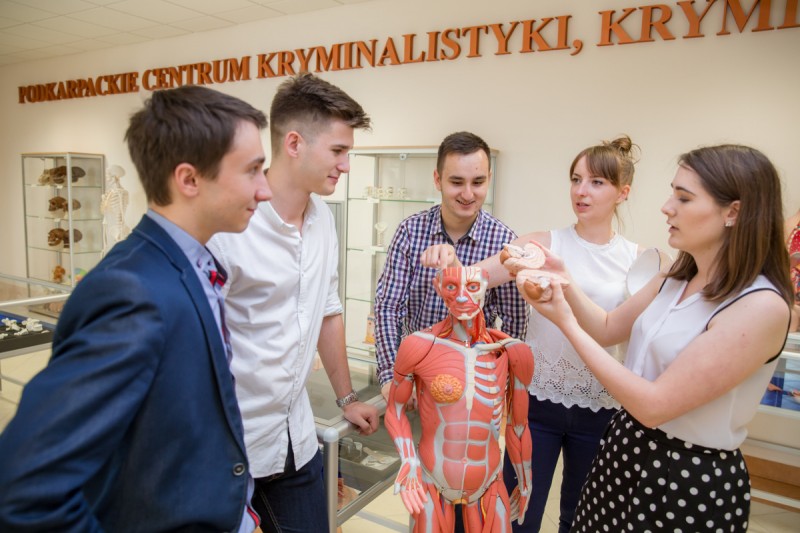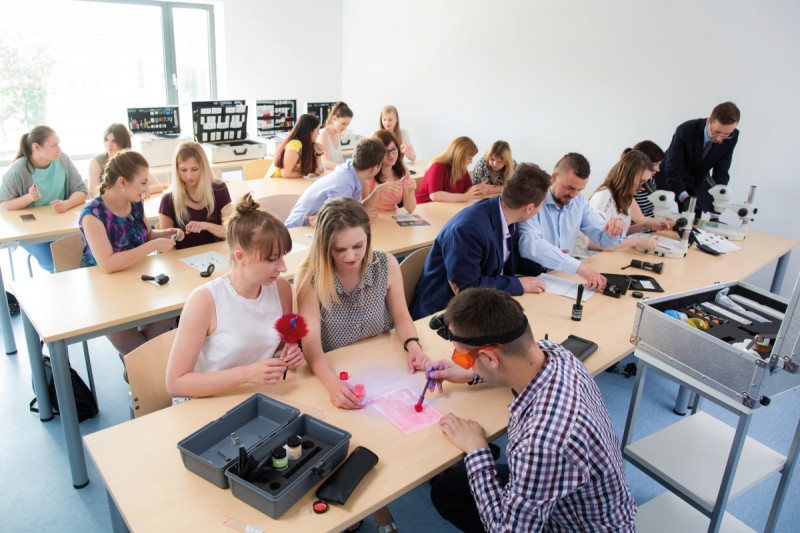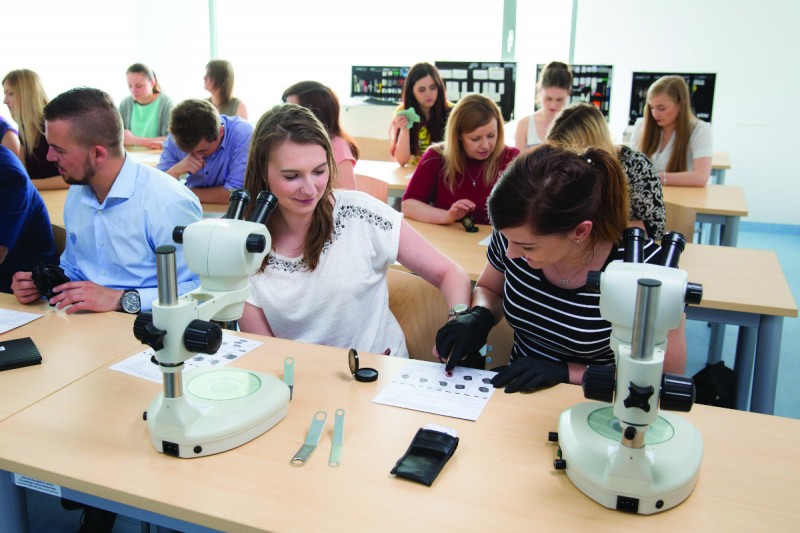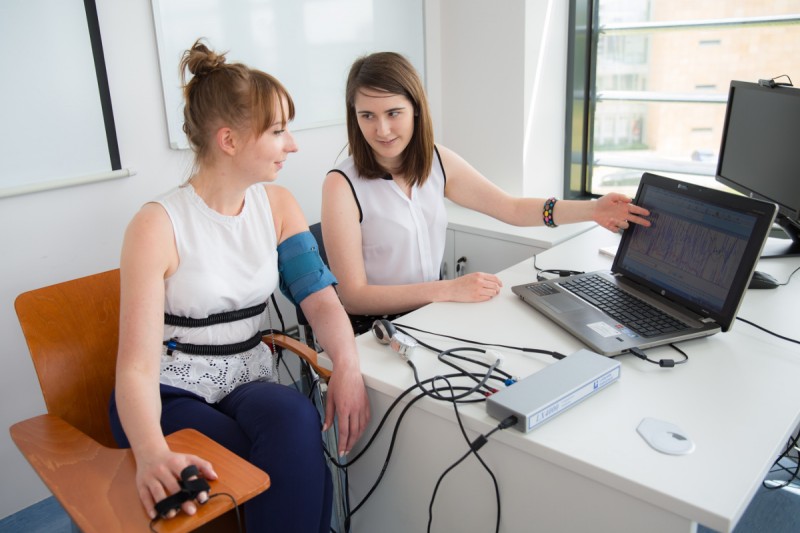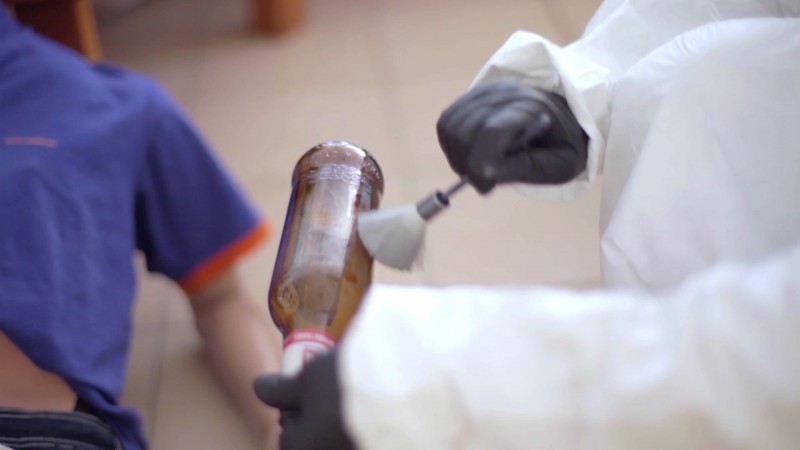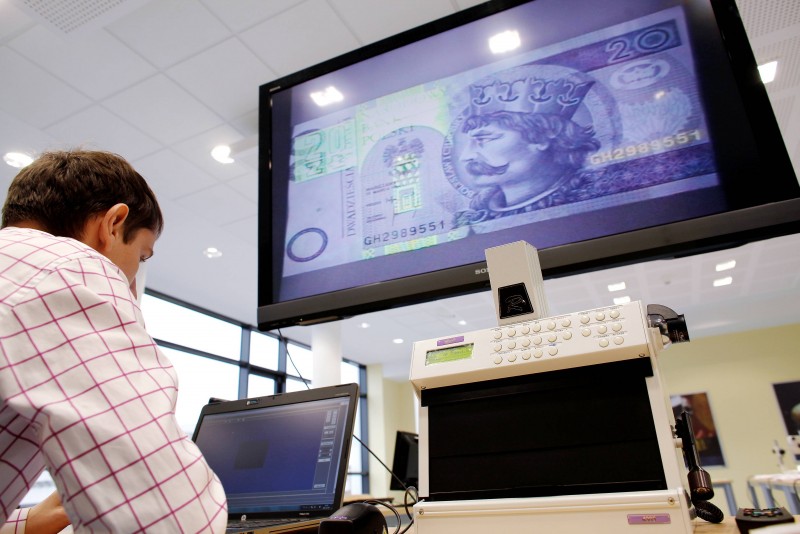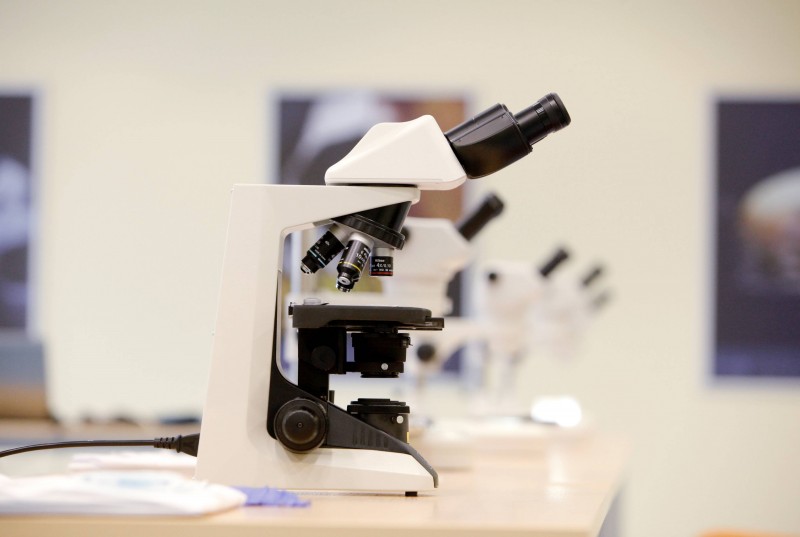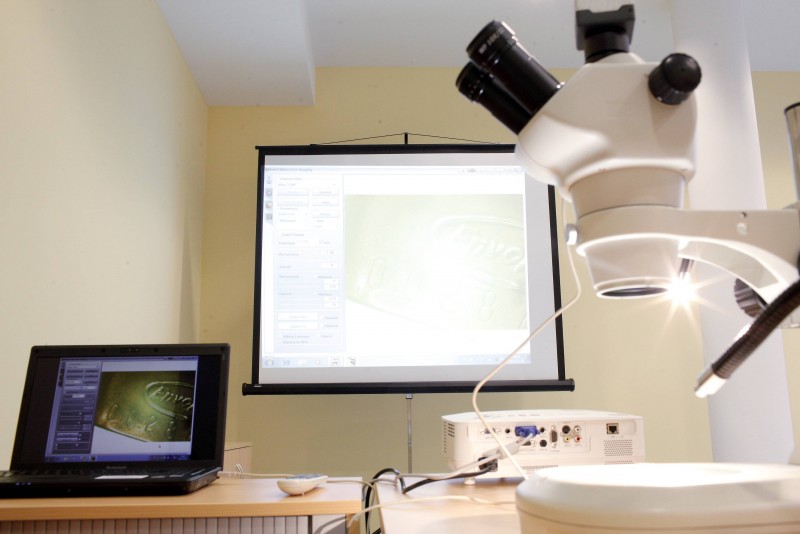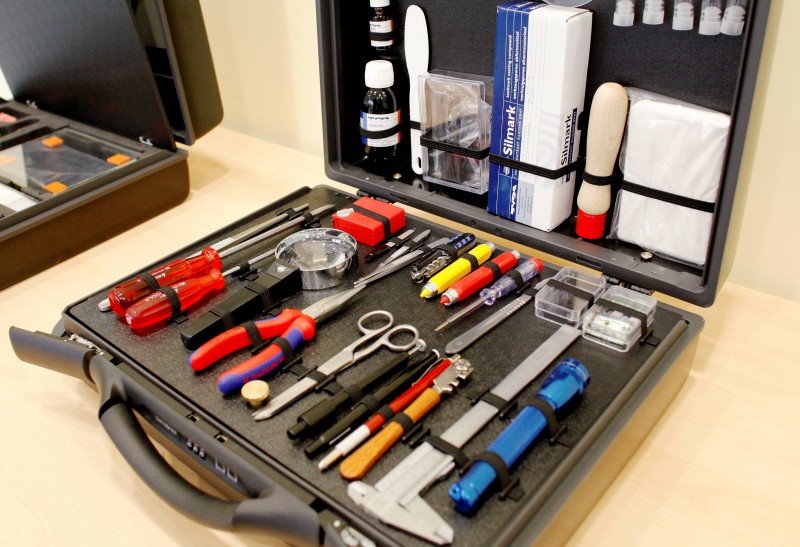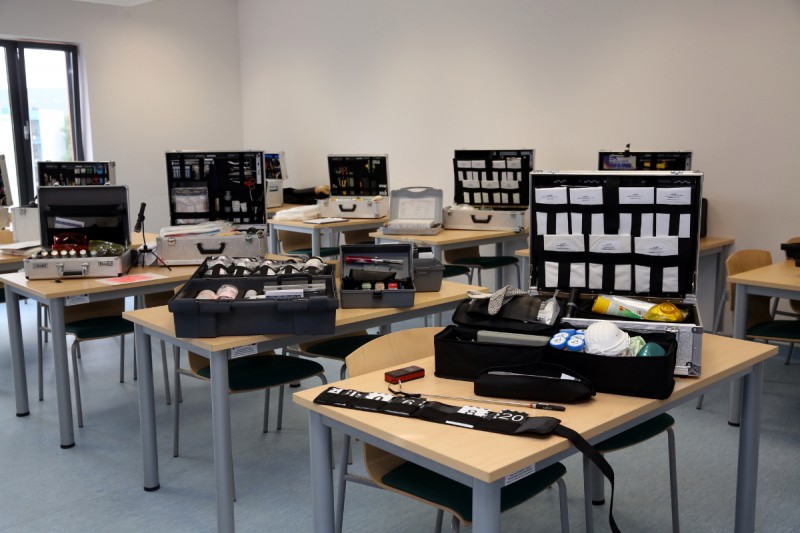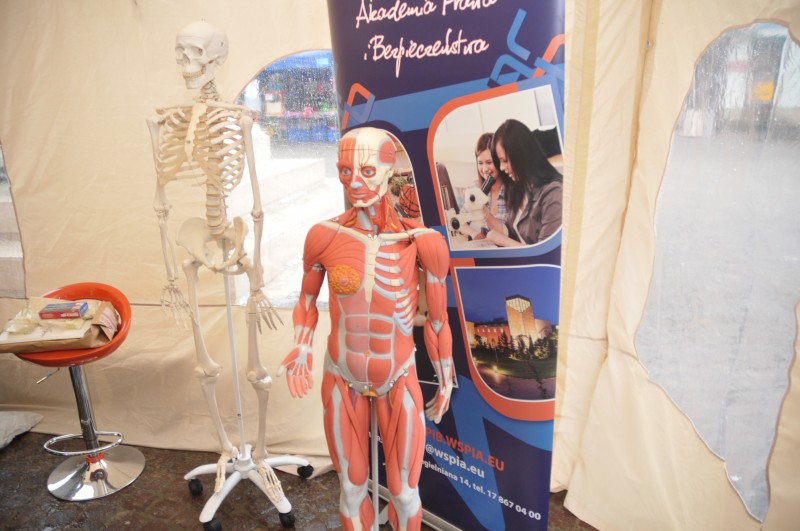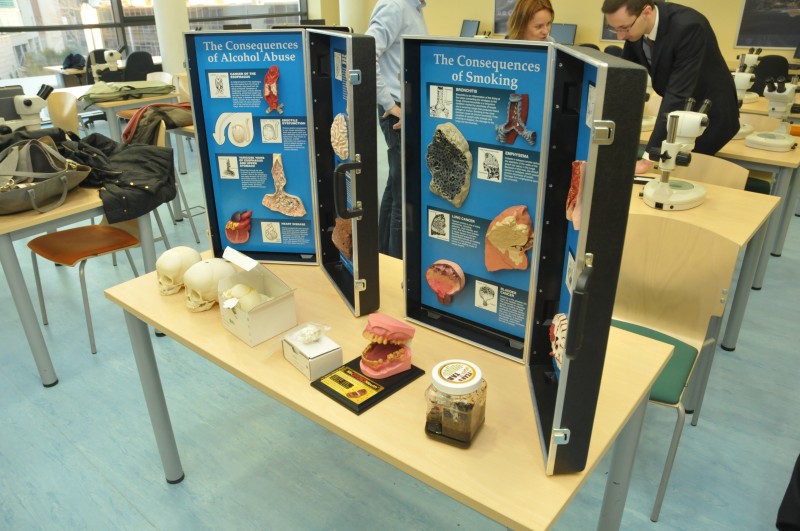Subcarpathian Centre of Forensic Science, Criminology and Forensic Medicine
Subcarpathian Centre of Forensic Science, Criminology and Forensic Medicine
During classes at the modern Subcarpathian Centre of Forensic Science, Criminology and Forensic Medicine, our students gain knowledge under the guidance of experienced practitioners and specialists in forensic science. They learn the practical aspects of the work of an expert and forensic technician, including the principles of securing forensic traces.
We have put state-of-the-art research facilities at the disposal of students and instructors - the most modern equipment that is available on the market. Our PCKKiMS (Subcarpathian Centre of Forensic Science, Criminology and Forensic Medicine) is equipped with both forensic equipment and equipment for classes in forensic medicine, forensic biology, forensic anthropology or toxicology.
Classes held at PCKKiMS are designed to provide students with knowledge and practical skills in the field of broadly defined forensic identification. PCKKiMS also serves secondary school students during classes as part of the Podkarpackie Youth Academy of Law and Safety.
At PCKKiMS, we have established a Forensic Laboratory and an Event Simulation Laboratory.
There are three laboratories in the Forensic Laboratory:
1. Forensic Identification Laboratory,
2 Forensic Medicine and Forensic Biology Laboratory,
3. Variographic Research Laboratory,
The following were launched in the Event Simulation Laboratory:
1. Ballistics Laboratory,
2. the Aviation Safety Laboratory
3. the Terrorism Research Laboratory.
The studios were created to demonstrate the complexity of the crime detection process and the state-of-the-art methods used in this process. Thanks to the teaching aids in the laboratories, we are able to offer, among other things: classes in forensic examinations of persons - showing how bodily injuries and their mechanisms are determined, in forensic anthropology - showing the process of identifying a person on the basis of the bones found, or in forensic toxicology - showing how poisons work and what effects they have.
The equipment at the Podkarpackie Centre for Forensic Science, Criminology and Forensic Medicine includes:
· Virtual reality simulators:
o Virtual crime scene - to simulate the examination of a crime scene and the analysis of traces found.
o TRIAGE - for the simulation of emergency medical response activities at the scene of a disaster.
o Internet threat simulator - to simulate cyber attacks.
· EFIT 6 software - the most developed memory portrait tool used by services in 32 countries worldwide.
· CSIpix software consisting of three modules: Comparator, Matcher and Case AFIS - a solution used by more than 600 uniformed formations and agencies worldwide. Taken as a whole, it creates an advanced tool that enables the comparison of fingerprint and other forensic images.
· A variograph (polygraph) commonly referred to as a lie detector - a device used to analyse the physiological reactions of the human body, which are an interpretation of emotions and its response to the external environment. The variograph is of great use in the work of law enforcement agencies.
· Videocomparator - a specialised device for examining the authenticity of documents, in particular passports, visas, etc. The same equipment is available, for example, to the Border Guard.
· Stereoscopic microscopes - optical microscopes with separate eyepieces for both eyes, allowing the magnified image to be seen spatially. The image seen in them is three-dimensional.
· Stereoscopic microscope with additional equipment and computer software - microscope equipped with additional illumination, photographic cap, multimedia projector, laptop and computer image analysis programme.
· Laboratory and research microscopes - biomedical microscopes, are used to examine biological traces collected at a crime scene.
· Cyanoacrylate chamber - designed to reveal dactyloscopic traces.
· Electronic shooting range.
· Signal photography station - photographs of people taken under consistent, comparable conditions, as required by the Police.
· Fingerprinting table.
· Thermal cameras.
· Forensic drone.
· Inspection tents and screens.
· Visual inspection kits - contain the equipment and materials necessary to carry out a visual inspection of the scene:
o a set of forensic traps,
o a traseology kit for securing, among other things, traces of human movement,
o a dactyloscopic kit for securing fingerprint traces,
o a mechanoscopic kit for securing traces of tools used by the perpetrator of a crime,
o micro trace kit,
o osmological kit for securing odour traces,
o a set for the examination of a corpse,
o kits for securing traces of sexual offences.
· Micropreparations.
· 'Nark II' preliminary drug identification tests.
· Drug dummies.
· Forensic illumination kit
· Detector for the detection of ferrous and non-ferrous metals.
· Equipment and materials for fingerprint classes, including: ceramic cushions, hand fingerprint kit, Inkless Shoe Print kit, metal holders for fingerprint cards, marabou fluff brushes, fibreglass brushes, magnetic brushes, chemical reagents, black, white and transparent gelatine films, silicone compounds, etc.
· Military special kit for wound debridement
· Crime scene wound simulation kit
· Casualty simulation kits
· Xtreme wound imitation set
· Imitation wounds - forearm
· Glasses posing as a visual image of a person under the influence of alcohol and drugs
· A doll to demonstrate the harm of smoking during pregnancy
· A model of the human skeleton
· two-gender muscular figure
· Skull models:
o fetus,
o child at different ages,
o anthropological,
o with hydrocephalus,
o with cleft jaw and palate,
o didactic BONElike,
o with facial muscles,
o adult 22-piece,
o women and men,
· Individual bones.
· Lung models: a smoker and with pathologies.
· Brain model.
· Liver model with disease states.
· TRAUMA CPR phantom with light indicator for wound and injury simulation.
· SIMPLE SIMON phantom, used to simulate the mechanisms of injury and trauma.
· Human histology.
· Crime analytics kit.
· Overview tables (human anatomy and physiology).
Didactic boards showing the effects of alcohol abuse and drug addiction
Photo gallery of the Subcarpathian Centre of Forensic Science, Criminology and Forensic Medicine
Virtual walk:
Main hall of the Subcarpathian Centre of Forensic Science, Criminology and Forensic Medicine
Forensic Identification Laboratory
Laboratory of Forensic Medicine and Forensic Biology
Laboratory for variographic examinations including a station for taking signalling photographs
We invite you to watch the videos:
